

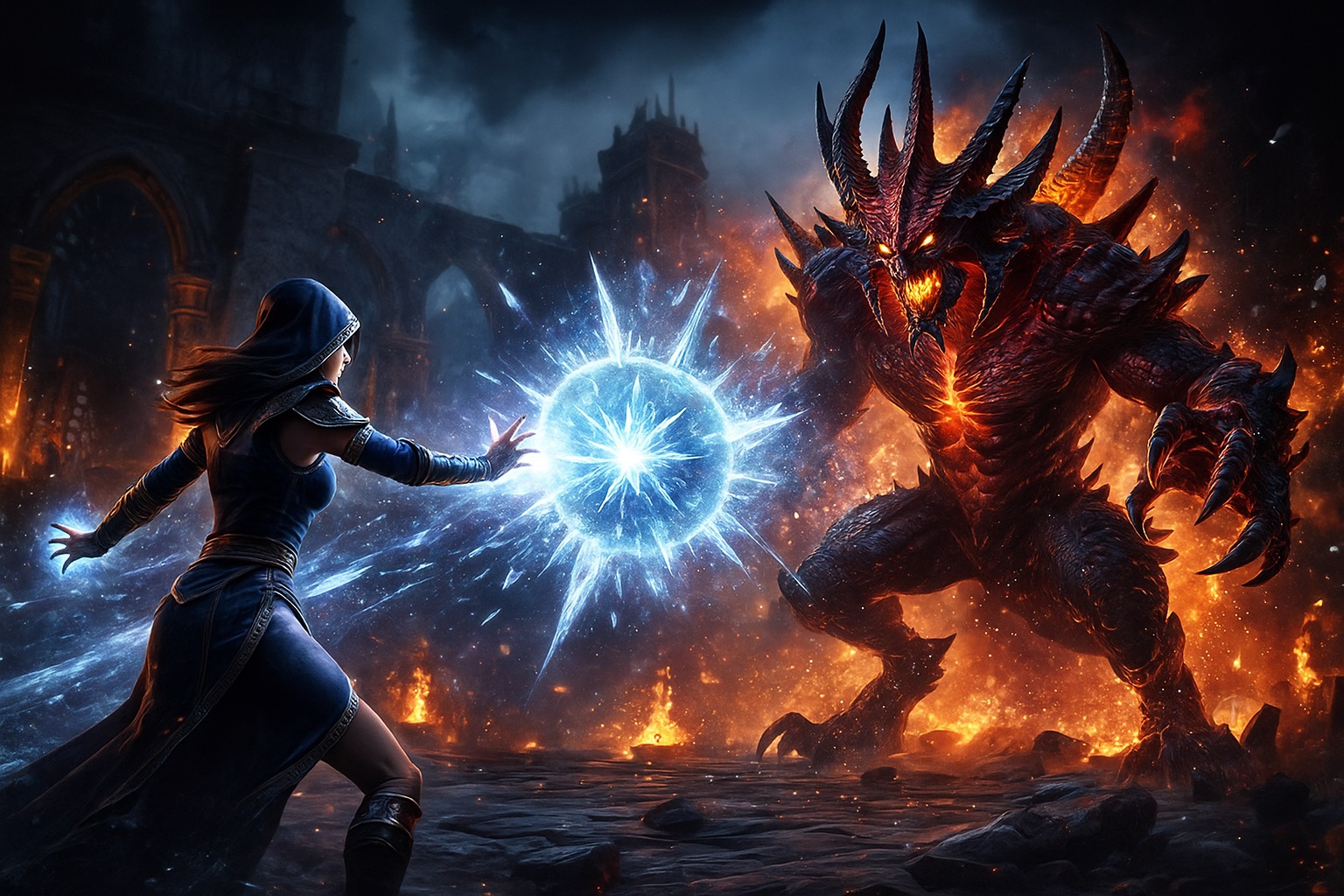
During my playthrough of Keep Digging, a friend casually mentioned that it reminded him of Diablo II because of how much clicking was involved. I can’t fully explain why, but that comment instantly gave me the itch to fire up Diablo II Resurrected again, and I’ve been casually playing it ever since. The last time I played Diablo II Resurrected was a little over four years ago, which I wrote about on my blog. Returning to this timeless classic simply felt right.
I found it surprisingly easy to pick up where I left off. The first thing I did was complete a playthrough of the game on Nightmare difficulty using my Hardcore Amazon, raising her level from 57 to 71 and earning her the title Conqueror. To be honest, I’m surprised I had the confidence to attempt it, considering that dying would have meant losing the character and all the progress I’d made with her. Perhaps after four years away I’d simply forgotten how much effort I’d put into the character in the first place, so it didn’t feel like it would have been a huge loss.
My attention then turned to my Softcore Amazon, which I used to complete a playthrough on Hell difficulty, earning her the title Matriarch. This also unlocked the ability to farm the Secret Cow Level, also on Hell difficulty, which I found great fun. During this time I found a few cool items, including a Vex rune, and managed to raise her level from 80 to 88.
While playing my Softcore Amazon, I found farming a little slow and felt a hankering to play a Sorceress, who benefits from the Teleport spell and is generally faster, as well as better at stacking the all-important Magic Find stat. Starting from scratch, I created a Softcore Sorceress, completed the game on all three difficulties, and farmed a lot of items, including the full Tal Rasha set and several valuable runes, most notably an Ohm rune, the highest rune I have ever found.
I realise that my accomplishments are modest compared to many players who have invested a lot of time in playing Diablo II over the years. Crafting or finding perfect items, or creating perfect runeword items, is impressive, but you either need to be incredibly lucky or extremely dedicated. That said, I have noticed some changes that make things a little easier.
There are now Terrorized Zones, where monster levels scale with your character level, meaning they can technically drop better loot. In these zones, it is also possible to find Grand Charms that can sunder a monster’s immunity to a particular damage type. For example, a monster that would normally be immune to cold damage will no longer be immune if you have the right Grand Charm in your inventory, although the monster may still have high resistance to cold, so it might take a while to defeat.
The last change I have noticed is that players can now slay the Cow King in the Secret Cow Level and still be able to open portals to the Secret Cow Level. I found this to be an especially welcome change.
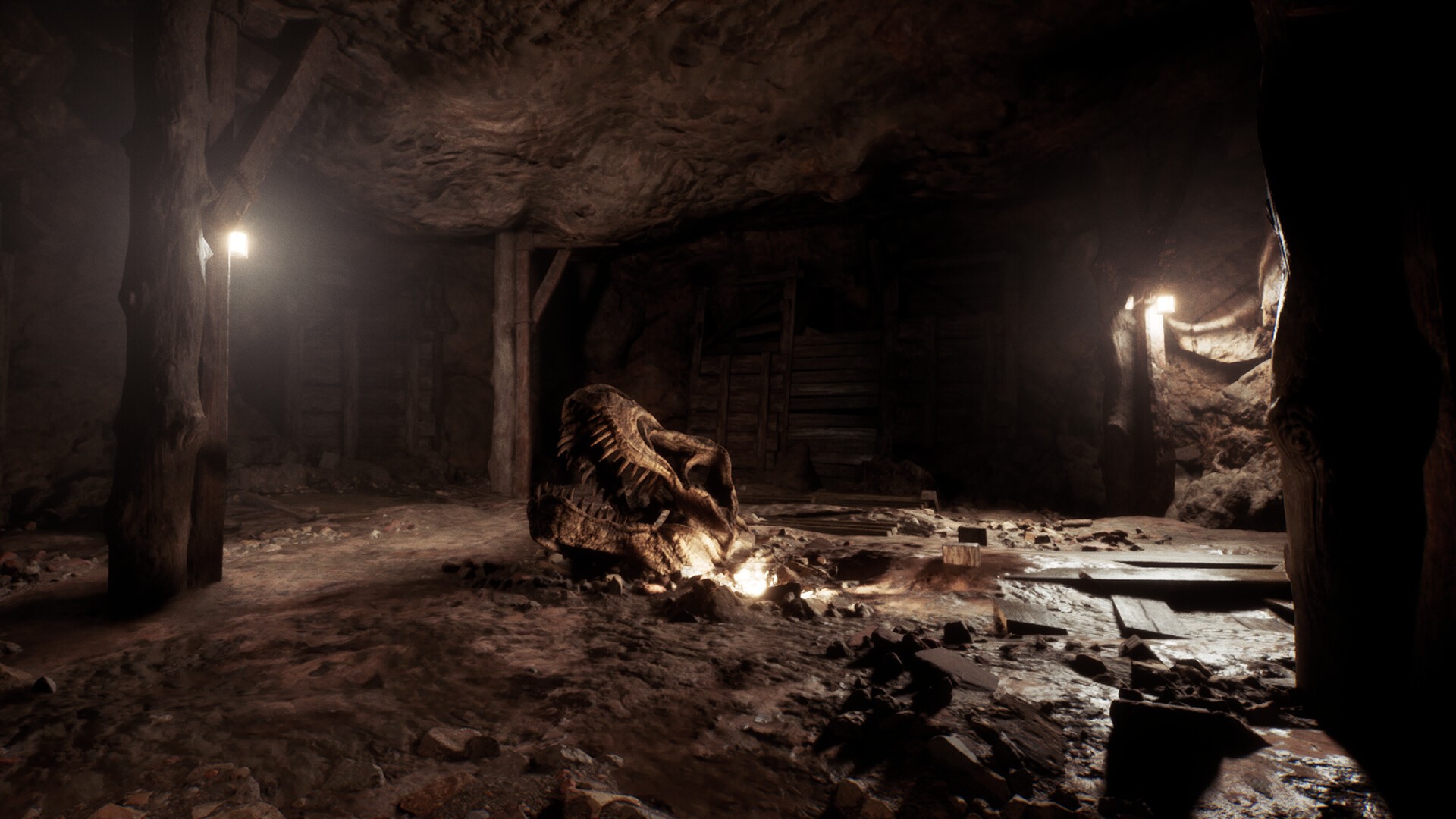
A week or so ago, my friends Jamie, Shadey and I completed a playthrough of Keep Digging. Developed by the indie company Wild Dog, Keep Digging is a light, laid-back game that we used as a sort of stopgap between some of the longer, more involved games we usually play. The premise is simple: you dig with a shovel (which can later be upgraded to a pickaxe) and collect resources. The deeper you go, the more valuable the resources become. These can then be exchanged for in-game money, which is used to buy upgrades that help you dig even deeper.
Among other things, you’ll uncover fossils at different depths. These can be assembled on the surface to build a dinosaur. It’s a little random, but that’s part of the game’s charm. You can also find chimpanzee skins and emotes, which add to the sense of randomness.
At certain stages, there are small open caverns which we explored together. One of them resembled a cathedral, complete with stained-glass windows and a chimpanzee statue. The developers did a great job with the lighting effects, something all of us commented on while exploring the area. To me, it showed that while Keep Digging is a small and simple game, it still contains touches of high-quality detail and pride. It made me want to… well… keep digging deeper to see what was next.
There’s a bit of a sandbox element to Keep Digging. Since our playthrough, I’ve seen other players spend time experimenting and doing interesting things. For me, though, it’s always going to be the kind of game you play with a friend or two to chill for a few hours and see what’s at the end.
I don’t think this is the sort of game people will invest huge amounts of time in, at least, that’s how it felt for me. Having reached the end, unlocked all the achievements, and assembled the dinosaur, I’ve happily added Keep Digging to my list of completed games. At only around 5.5 hours of play, it’s definitely a quick win, but still a satisfying one.
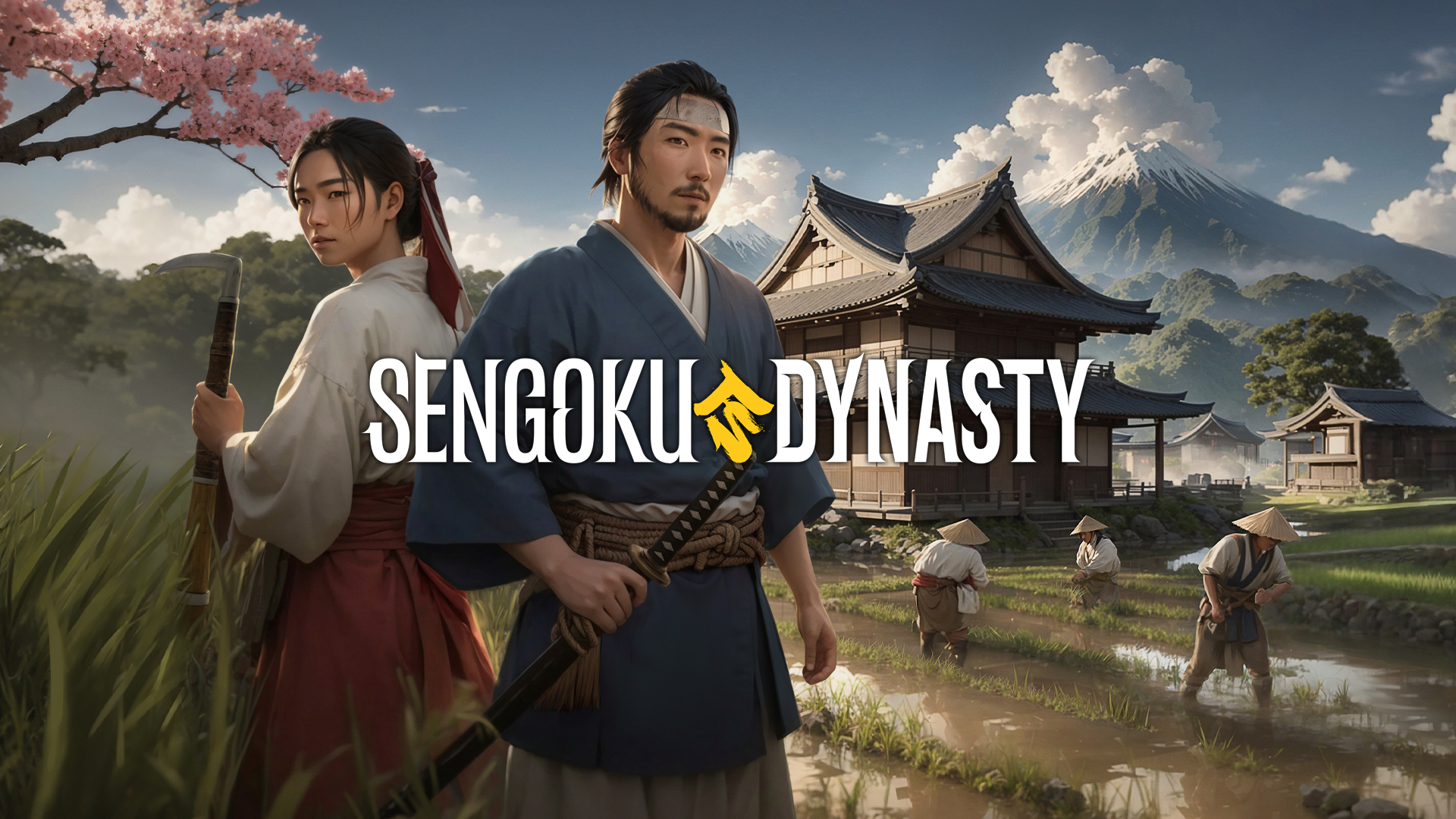
Last week my friends Jamie, Shadey and I completed a playthrough of Sengoku Dynasty, an open-world survival game set in medieval Japan. Developed by Superkami, Sengoku Dynasty does a fantastic job of immersing you in its historical setting, but I have to admit that I found it in need of several bug fixes and a number of quality-of-life improvements. The game was officially released in November 2024, but development is still ongoing. I have every reason to believe that the issues I encountered will eventually be resolved, yet during my playthrough they were, at times, frustrating.
In Sengoku Dynasty, one of the main objectives is to build villages and provide homes and work for refugees while managing resources. I enjoyed the concept of constructing settlements, welcoming refugees, and gathering materials, but I didn’t find the resource management aspect, keeping villagers happy and productive, particularly engaging. For instance, to keep your villagers fed you might set up a fishing hut and assign someone to catch fish. However, they can’t fish without nets, so another villager needs to make nets. Nets require straw, which means another villager must produce straw, and to do that someone else has to gather grass. On top of that, you may need yet another villager to cook the fish. This chain of dependencies is just one example of the many systems you must balance, and for me, it quickly became more of a chore than a source of fun. What’s worse is that there are also ‘special projects’ such as constructing bridges and lighthouses that require a large number of villagers to complete between season changes. This meant constantly readjusting roles and reassigning jobs in an attempt to keep everything balanced.
Jamie was, as usual, highly creative and built two impressive villages, which we named Village-san and Village-shire. I have to say that Jamie’s creations looked far better than any of the example settlements included by the developers. I genuinely believe Jamie would make an excellent world designer for games like this. Although the quality isn’t the best due to the way my computer hardware is set up for work, I did manage to record 2 short walkthrough videos to showcase our villages. I have also included some of my favourite screenshots.
While Jamie was busy creating the villages, Shadey and I focused on gathering resources, crafting weapons and armour, and working on liberating the regions of Sengoku Dynasty. This involved completing the aforementioned special projects and taking down enemy camps and their leaders. Liberating regions unlocked resources, buildings, and items we needed to progress. Although the progression arc is fairly straightforward, it is always satisfying to work towards unlocking the next tier of items. After roughly 35 hours of play, having liberated all the regions, earned ‘The Great Unifier’ achievement, and built two villages, I feel the conditions have been met to add Sengoku Dynasty to my list of completed games.
I mostly enjoyed playing Sengoku Dynasty. The setting is interesting, and exploring an open world is always fun, but more than anything, it was great to share the experience with my friends. To be honest, I’m convinced that even a game of tic-tac-toe with them would be entertaining. I’m not yet entirely sure what we’ll play next, but Shadey has mentioned wanting something a bit more imaginative and less focused on realism. I have to agree with him on that.
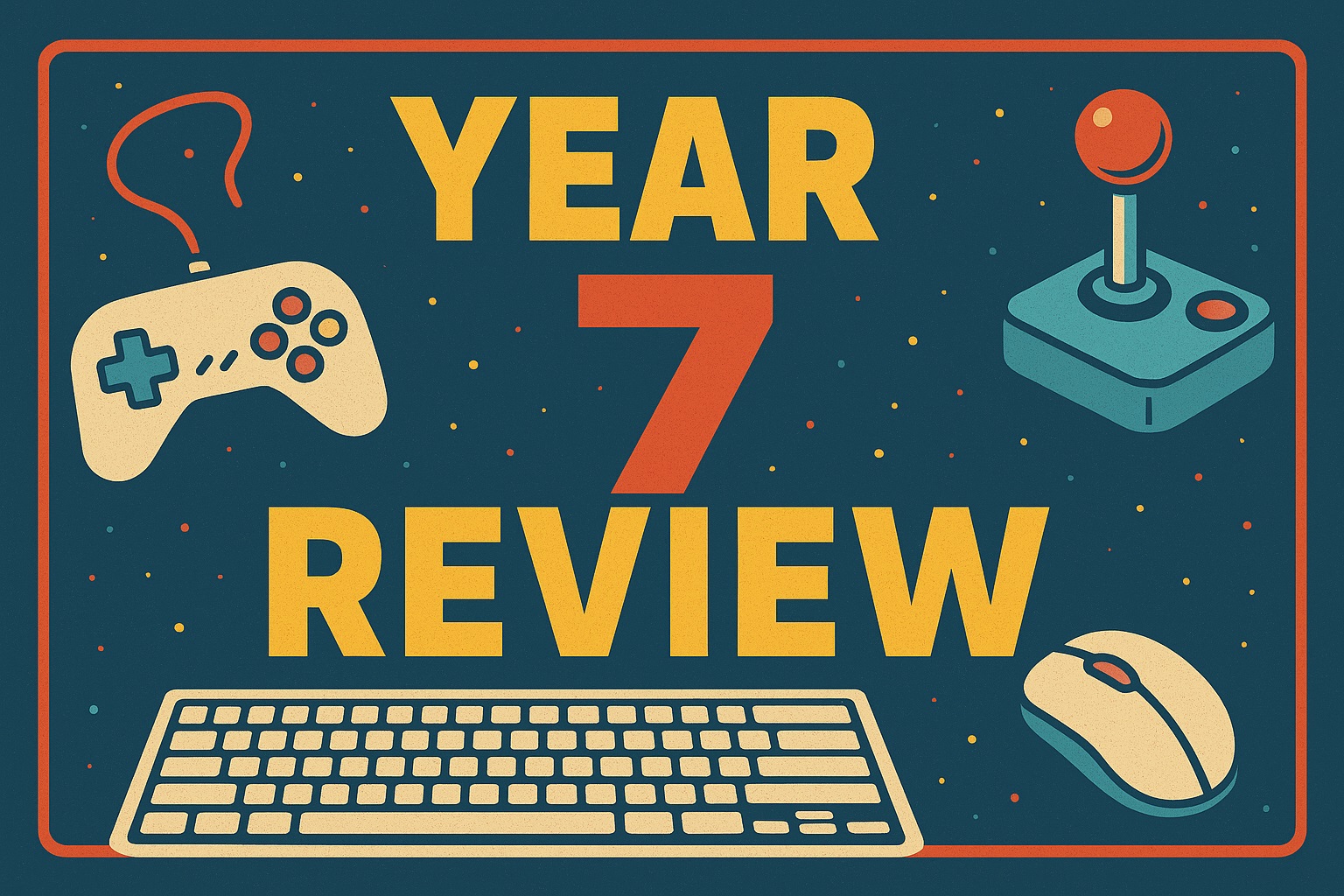
The year 7 review of my blog is long overdue, and I must admit I almost forgot about it entirely. While I’m not disappointed with my gaming over the past year, it hasn’t been as strong as year 6, which marked a real turnaround and major improvement on year 5. This past calendar year, particularly from January onwards, has been a difficult one outside of gaming, and it inevitably had a negative impact. There were stretches where I didn’t feel able to play at all, and when I did return, I struggled to properly get back into it. Despite the setbacks, my passion for gaming hasn’t gone away, and I’m determined to build on it again.
Since my last review, I’ve written 14 blog posts, 9 of which focused on new games. I managed to complete 7 games, some of them with friends. That’s fewer than the 11 I finished the year before, but still an achievement I’m happy with. The standout accomplishment was finally completing Final Fantasy IX, which is a huge relief after first starting it back in 2022. I also worked through the atmospheric Metro 2033 Redux and Metro: Last Light Redux, both shorter, linear but very engaging experiences. Completing Front Mission 2: Remake felt satisfying, though if I’m honest it was more about preparing for Front Mission 3: Remake, which I hope will release on PC soon. On the multiplayer side, Jamie, Shadey and I played through Goat Simulator 3, which was every bit as chaotic and random as expected. We also tried The Forest, which was cool, though I have to admit I’ve enjoyed other survival games more. Finally, we wrapped up Dead Island 2, which I thought was excellent and a refreshing change of pace from our usual survival game titles.
This year felt more like a realisation than a lesson. I’ve noticed that when life is difficult outside of gaming, it too easily casts a shadow over my time with games. Going forward, I’d like to keep gaming even during tough periods, using it as a way to switch off and escape, even briefly. In those times, I think it helps to choose smaller, cheerful games that are easy to pick up and put down, leaving the longer and more demanding games for when things are going better.
I’ve also learned how valuable AI tools can be. They’ve been especially useful for checking spelling, punctuation and sentence structure in my blog posts, as well as generating suitable feature images, like the one for this review. I still write the posts and make the final decisions on imagery, but AI has proven itself to be a powerful assistant that makes the process smoother and more creative.
I don’t want to set rigid goals or put unnecessary pressure on myself, but I do want to keep gaming during difficult periods and make better use of AI along the way. I’ve also got a long backlog I’d like to chip away at, with titles such as Sengoku Dynasty, Dune: Awakening, The Witcher 3: Wild Hunt and Streets of Rage 4. At the same time, I’m eagerly awaiting a few upcoming releases, including Front Mission 3: Remake and Terminator: Survivors.
As for the blog itself, I’m still really pleased with how it looks and don’t feel it needs any major development. The only exception is that I am getting spam comments on my most recent blog posts. I will consider what I can do about that in the weeks ahead. My PC, bought in 2019, is beginning to show its age, but for the moment it continues to serve me well. Unless something breaks or struggles to run the games I want to play, I’ll happily stick with it for at least another year.
If you’d like to share any feedback or suggestions about my year 7 review, I’d be delighted to hear from you. You can leave a comment here or get in touch by any other means that suits you.
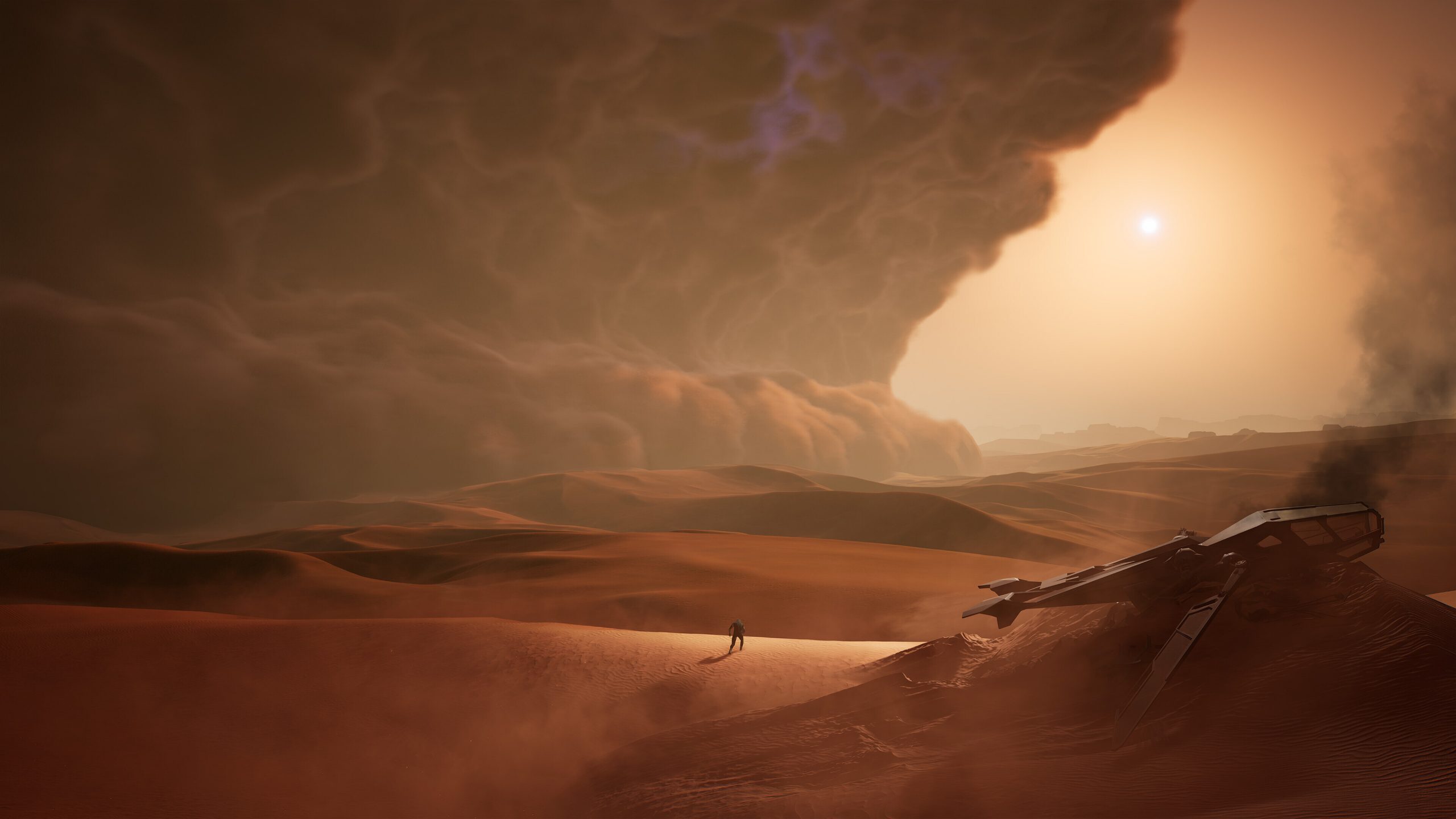
It has been exactly one month since my first Dune: Awakening blog post, and I haven’t played anything else since. So here’s part two of my adventures on Arrakis. My playtime has leapt from 45 hours to around 190, and I’ve accomplished quite a lot. I graduated from riding a Sandbike to building my very own Scout Ornithopter, which is an absolute joy to fly. It opens up the Hagga Basin, making it much easier to gather and transport resources, and it allows you to travel not only into the endgame deep desert but also to other distant locations on Arrakis.
If you’re considering playing Dune: Awakening, I’d strongly advise not rushing. The Sandbike is fun, but the pride that comes from taking your time to find and refine the necessary resources to build your first Ornithopter cannot be overstated. I was so proud of my accomplishment that I took several screenshots of it. I think this one is my favourite.
I also built an Assault Ornithopter, which has a larger hold but is more of a chore to fly. It comes with a thruster, but overall it’s slower than the Scout Ornithopter. I’ve used it in the deep desert to gather resources, but whenever possible I leave it parked and avoid using it in the Hagga Basin.
Another accomplishment is refining spice sand into spice melange, the most sought-after resource used to build endgame items, fabricators, and refineries. I discovered that the basic spice refinery is actually quite inefficient, producing just one unit of spice melange for every 100 units of spice sand. In contrast, the medium spice refinery produces 10 spice melange for every 750 spice sand, which works out at 75 spice sand per unit of melange. To reach this point, I used the inefficient refinery to produce exactly 135 spice melange from 13,500 spice sand, just enough to construct the medium refinery and move towards greater efficiency. There is also a large refinery, which yields 200 spice melange from 10,000 spice sand (50 sand per melange), but it costs 1,000 spice melange to build, which is a steep investment. And while I’d like to be as efficient as possible, I’ve chosen to spend a little melange on fabricators and equipment, while keeping some in reserve.
My base is still essentially a box, although now it’s a bigger box. In fact, at this stage it looks more like a mushroom. I’ve added a large pentashield so I can take off and land easily without exposing the base to the harsh Arrakis environment, as well as wind turbines and wind traps on the roof to provide power and generate much-needed water. If I write another post, I may include a walkthrough of the base. I’m quite proud of it, even if it looks a little odd.
I’ve also picked up some things about the lore of Dune. There are two warring factions, House Atreides and House Harkonnen, and while players are encouraged to join one of them, I don’t believe it’s strictly essential. I’ve learned that we’re searching for the Fremen, the native people of Arrakis, who may have been eradicated by the Emperor. I understand they play a central role in the original book and films, but Dune: Awakening takes a different path, imagining events as if Paul Atreides, the main character of Dune, was never born.
I still feel as though I’ve only scratched the surface of Dune canon, but I chose to side with House Atreides. To me, both factions seem equally flawed, but the Harkonnen come across as a particularly brutal and unsophisticated lot. While I’ve made some progress, I know I still have a long way to go in completing the story and exploring everything House Atreides has to offer. Until then, I don’t think I can add Dune: Awakening to my list of completed games. That said, I’ll certainly write a part three, and possibly even a part four, especially if my friends decide to join me on Arrakis someday.

In an effort to cheer myself up and reconnect with gaming, I picked up Dune: Awakening. Developed and published by Funcom, Dune: Awakening is a survival multiplayer game inspired by Frank Herbert’s 1965 science fiction epic, Dune. As a teenager in the ’90s, I watched the 1984 film adaptation, but I never considered myself a fan of the universe and I still haven’t seen Dune: Part One or Part Two. That said, after spending over 45 hours in Dune: Awakening, I can confidently say that I am a fan now.
I enjoy exploring the different biomes, gathering materials, building a base, and crafting items and vehicles to push into the next zone, but these mechanics are fairly standard for the genre. What really sets Dune: Awakening apart is its futuristic, harsh, dystopian atmosphere. The constant threat of sandstorms, patrol ships searching for you at night, hostile enemies on the ground, and of course, the iconic giant sandworms all keep the tension high and the heart racing. The world itself is massive, specifically the Hagga Basin, which is filled with enemy camps, factories, crashed ships, testing sites, and more. At times, the soundtrack is excellent, and it occasionally reminds me of the Blade Runner 2049 score. I’ve never been great at the creative side of base-building in games, so for now, I’ve settled on a simple box for my home.
Instead of playing on one of the public servers, which I believe can host up to 40 players, I decided to rent my own private server through xREALM. It’s the first time I’ve ever rented a private server, and I have to say, I’m impressed with how easy it is to set up and use. I was given a control panel with clear instructions on how to connect and manage the server, and sharing it with friends is simple. I paid £13.99 for a month’s rental, which I think is reasonable considering it lets an introvert like me enjoy the game solo or with a small group. The server stays online 24/7, is frequently updated, runs smoothly, and saves me the hassle of hosting locally. Honestly, I wish more games offered this kind of third-party hosting option. I’ve shared the login with my friends Jamie and Shadey in case they want to jump in, but I doubt they will, they’re both into other games at the moment.
Looking ahead, I plan to spend a lot more time in Dune: Awakening. I’m hoping to complete many of the quests and follow what promises to be an intriguing story. It’s far too early to add this to my list of completed games, but I do hope that one day I’ll be writing another blog post to say I’ve seen it through to the end, and that it was every bit as good as it feels right now.

I want to write about why I stopped playing EVE Online. In my last EVE Online post, I wrote about flying the Nidhoggur carrier, what I learned, the fun I had, and how much I was enjoying the game. Before that, I shared my experiences joining a player corporation and exploiting the rich resources of nullsec (no security) space. Everything was going well. In fact, I was having some of the most fun I’ve ever had with EVE. So why did I stop playing?
What ended it for me was player politics. I was in a corporation called Silent Armada, which was part of an alliance called Game Theory, itself under the larger Phoenix Coalition. Phoenix Coalition controlled a number of solar systems, providing a sense of safety and stability for its members. But with structure comes leadership—and with leadership comes disagreement. From what I gathered (as a non-leader), the CEO of Silent Armada had a falling out with the alliance leadership. The disagreement centered around ship usage, specifically capital ships like my Nidhoggur. After a few players lost expensive ships to hostile players, the alliance began discouraging the use of capitals unless specifically authorized. This was meant to prevent us from appearing like easy targets.
Silent Armada’s CEO disagreed with this approach and eventually decided to leave the alliance entirely. The result was that all Silent Armada members were expected to move to a different corp, Angel’s Cry (yes, that apostrophe still bothers me), within a different alliance but still inside the Phoenix Coalition. This move required us to relocate, transfer assets, and start over. For me, that was the breaking point. I had spent 6–7 weeks building a life in nullsec, learning how coalitions function, investing in ships, setting up planetary industry, and integrating into the community. I made an effort to be involved, even in activities outside my comfort zone, all to feel like I belonged. Uprooting all of that because of leadership politics felt terrible. I didn’t want to start again. So I stopped playing.
On the plus side, I can finally share a video I recorded of myself clearing a Serpentis Haven in my Nidhoggur, without worrying about giving away intel.
Despite how things ended, I’m grateful for my time in nullsec. I learned a lot, including that life in nullsec is built on shifting sands. Threats come not just from other players, but from internal instability. For some, that’s part of the thrill. But for me, a sense of stability and security is essential to my enjoyment.
Almost a year later, I logged back into EVE to tidy things up. I sold nearly everything, and ended up with just over 20,000 PLEX, which was a surprise to me when I found out the market value for this is around £500! I also created a new set of characters and set up my own corp for a fresh start, I realize the reason I stopped playing EVE Online in the first place was because I didn’t want to start over, but at least this way it will be on my own terms.
On a personal note, logging in a game felt good. Life has been hard lately, and I haven’t been gaming much. Things are still hard, but they’re improving. Also, the featured image for this post was created using AI which is a first my blog, and I think it turned out pretty cool!

Lately I have been thinking about video game music and how it has evolved over the years. For me it technically started with 8-bit (chiptune) music when I was a young boy in the late 80’s and early to mid 90’s playing games such as Super Mario Bros on the NES (Nintendo Entertainment System). Having said that I first started to really notice video game music when I was playing games such as Streets Of Rage 2 which uses FM (frequency modulation) synthesis on a 16-bit system, in this case the Sega Mega Drive. I realize of course that there will be people who are probably older than I am that will have memories of older, more primitive sound systems. But around the time of the end of the 8-bit and beginning of the 16-bit era is where it all started for me.
I found a few of my favourites from that time on YouTube.
Streets Of Rage 2: Go Straight
Street Fighter 2: Ryu Theme
Street Fighter 2: Guile Theme
Later as technology improved, video game music also improved at an impressive rate. From 16-bit systems we went to 32-bit with the PlayStation which also used a CD-ROM (compact disk read only memory) instead of cartridges. This meant it was now possible for the PlayStation to play music as you would if you were listening to a music CD. The drawback however is that the CD only had a maximum capacity of approximately 1 gigabyte of storage. Composers and cinematic directors would therefore need to keep that limitation in mind when developing their game. The CD-ROM drive also meant there was a massive advancement in playing games on PC, however there were other drawbacks, the main ones being that computers were usually expensive and bulky. Running games in DOS (disk operating system) allowed some games to be played on computers with low specifications, but it only got you so far. Still, that’s what I did to play Crusader: No Remorse which I completed again back in October 2020.
These are a few of my favourites from the time of 32-bit gaming on the PlayStation and the budget family computer.
Crusader: No Remorse: Main Theme
StarCraft: Terran Theme 1
Final Fantasy VII: Those Who Fight (Battle Theme)
Front Mission 3: Raid
Metal Gear Solid: Encounter
It is also during this time I heard my first full track/song while playing a video game. During the end credits of Final Fantasy VIII we hear the song Eyes on Me which was composed by Nobuo Uematsu especially for the game. It’s difficult to describe, but knowing the story of Final Fantasy VIII and having completed the game, the song is incredibly emotive to me. I also completed this game again back in February 2024.
Since the end of the CD-ROM era when we moved to DVDs (digital versatile disc) and high speed internet connections, games could easily accommodate a full high quality soundtrack. Triple-A games such as Gran Turismo 3: A-Spec and Grand Theft Auto III were therefore able to pay royalties to musicians and feature music tracks in their game. While it is cool and suits some games, for me it’s not as good as when video game music is composed specifically for a game to help create an immersive atmosphere. It pains me to say it but no matter how far Blizzard Entertainment have fallen from grace in recent years, they have in my opinion created some of the best cinematics and video game music in the gaming industry to date.
Here are some of my favourite modern day (sort of) gaming music titles.
World of Warcraft: Wrath of the Lich King
World of Warcraft: Battle for Azeroth: Freehold
XCOM 2: Squad Layout
Stellaris: To The End Of The Galaxy
StarCraft II: Heart of the Swarm
What I find amazing is when talented fans create their own versions of music from their favourite games. I think my favourite might be the Black Materia: Final Fantasy VII album by rapper Mega Ran. People who know me will say that I don’t like rap or hip hop music very much, but oddly I have to say this is an exception. Another favourite is A Fleeting Dream: A Melancholy Tribute To Final Fantasy X by pianist TPR.

Recently my friends Jamie, Shadey and I completed a play through of Dead Island 2. Released in April 2023, Dead Island 2 is a first person action role-playing game developed by Dambuster Studios. I never played the original Dead Island released back in 2011, but I knew it was a massive hit with its gory hack and slash zombie theme.
As a stand alone game I enjoyed playing Dead Island 2. As well as a decent co-operative mode allowing up to 3 players to play side by side, I liked the exploration, puzzle solving, boss fights and story. I found the main story line funny at times and I really like most of the sound track. I recognized a few tracks such as Humans Are Such Easy Prey by Pertubator from his Dangerous Days album, and I really like the main theme song, Drown by Karen O. There are 6 characters to choose from, I chose Ryan who at first I thought was a firefighter but turned out to be a stripper. My friends chose Dani and Bruno who are both pretty funny and unhinged.
One thing I really like in games are stats. I do not think my stats are particularly good, but here are some of mine after around 33 hours of play time. One thing which made my friends laugh was getting 0 perfect blocks and dodges. This is something I must have missed during the tutorial.
Having completed the game I feel like I can safely add it to my list of completed games. There are no difficulty settings so we played the game as the developers intended and to top it off we played through the Haus and SOLA story lines which arguably we didn’t need to do but I felt it was important. After taking a break to play The Forest and Goat Simulator 3 it felt good to return to Dead Island 2 to play these and wrap things up.
There is still so much more to do. There are many side quests, journals to find, challenges to complete and named zombies to slay. Not to mention loot to find. I think someone could easily sink another 100 hours completing everything and getting all of the achievements.

To be honest I don’t know where to begin when it comes to writing about playing Goat Simulator 3. I suppose it begins with my friends Jamie and Shadey who thought it would be a good idea to play something a little different and more light hearted than the survival games we have been playing such as Valheim and The Forest. Developed and published by Coffee Stain Studios (who also published Valheim) Goat Simulator 3 is, well, I don’t really know what it is but it uses the Unreal Engine 4 and was released in 2022. Before reading on I must point out that there are a few spoilers.
I have of course heard of simulator games, the most famous being the Microsoft Flight Simulator series which dates back to the 1980’s, but also Farming Simulator, Euro Truck Simulator and more. I have never played any of these but my understanding was that they are games developed to deliver a close approximation to whatever they were simulating. I didn’t know what to expect from Goat Simulator 3, but I knew that it surely couldn’t be literally simulating the life of a goat. I was right, but nothing could have prepared me for how random this game is. My friends and I would each play a goat in which we were able to change the appearance with cosmetics we could unlock by performing any number of random tasks within the world named San Angora. To say these tasks were varied would be an understatement, whoever thought up some of the activities in Goat Simulator 3 must be clinically insane, taking some potent drugs or both. The wild imagination it took to develop this game is I must say impressive, it’s the sort of game where a perceived bug could actually be a game feature, it being a feature before or after the bug report (if there ever was one) would have been irrelevant in Goat Simulator 3. I don’t know if there was a QA team for this game, but beyond making sure you can form a party with your friends and starting the game, I don’t know what else they could have tested.
Many of the activities reference a wide variety of pop culture. I think my favourite is a reference to the 1992 Wolfenstein 3D game developed for DOS. During the activity the game UI changed to a Wolfenstein 3D style where we would navigate around some rooms which contained grandmothers in rocking chairs that would shoot balls from a bazooka while shouting at you. As a reward for completing the challenge my friends and I unlocked a cosmetic of one of the grandmothers in a rocking chair with a bazooka which would sit on your goats back and shoot balls for you. I feel crazy just trying to explain it. Some things I can’t explain, such as what was going on in the screenshot below.
As we progressed and completed stuff we obtained illuminati ranks which unlocked rooms and features in our goat castle, which also acted as a sort of waypoint to different zones in San Angora. Eventually, after a few gaming sessions, we unlocked all of the rooms in the castle which introduced us to an end game boss fight. I did not think that Goat Simulator 3 would end up on my list of completed games, but after consideration I believe it just about deserves a spot there on account of doing enough to unlock the castle and defeat the boss after about 12 hours of play time. But there is still so much to this game, I think we could probably sink another 20-30 hours into it and still not complete everything it has to offer. Another favourite moment of mine was when we found a secret container rave and we chose some cosmetics to join other goats there. I made a short recording of what it was like.
I think Goat Simulator 3 is misunderstood by some. Yes it is a complete train wreck of a game, but that’s the point. It is precisely because of how random it is that it’s always funny and successful. I was highly sceptical at first and just happy to be spending some time with my friends, but now I can honestly say that I really enjoyed the game. My final thought for this blog post is that Goat Simulator 3 reminds me of someone I used to play World of Warcraft with, Kyra. I think there is a good chance that he is responsible for this game. I believe this because if you could pour all of his thoughts into a game this would be the likely outcome.